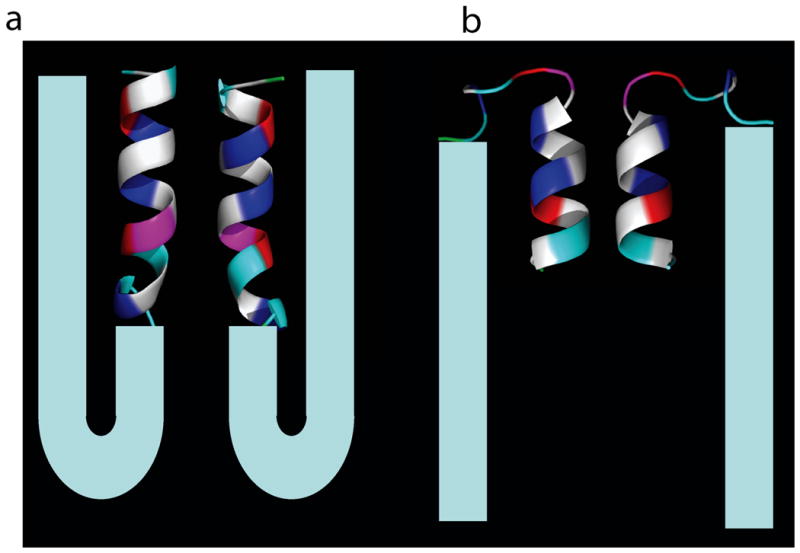Fig 9.

Cartoons showing the N17Htt-PolQ structures in two proposed mechanisms described in the text. Two representative cluster centroid structures are shown with faces paired to minimize exposed hydrophobic surface area. Each shows a model polyQ tail (cyan) which satisfies the observed N17Htt – polyQ domain interactions. (a). N17Htt adopts the single straight helix conformation and has the charged residues in a surface geometry which would compliment the polyQ tail's β-strand configuration. (b). N17Htt adopts a two-helix bundle conformation. The increased flexibility in the C-terminus of the two-helix bundle creates the turn necessary for polyQ – N17Htt interactions.
